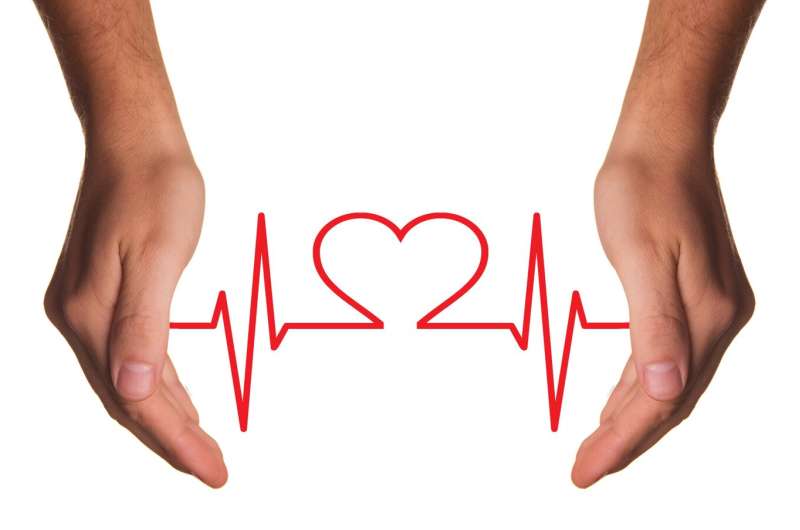COVID-19 pandemic indirectly disrupted heart disease care

Deaths from ischemic heart disease and hypertensive diseases in the United States increased during the COVID-19 pandemic over the prior year, while globally, COVID-19 was associated with significant disruptions in cardiovascular disease testing. These findings are from two papers publishing in the Journal of the American College of Cardiology that examined the indirect effects of the pandemic on cardiovascular disease patients and their care.
The impact of the COVID-19 pandemic has been substantial, but there are concerns about the indirect impact of the pandemic as well, particularly for heart disease patients. Many reports have suggested that large mortality increases during the pandemic cannot be explained by COVID-19 alone. During the height of stay-at-home orders in the U.S., hospitals reported a decline in the number of heart attack and stroke patients being diagnosed and treated at the hospital. The assumption was that some patients feared contracting COVID-19 at a hospital and were choosing to delay care or not seek care at all for emergencies, including heart attacks. The American College of Cardiology issued a statement and infographic on the safety of hospitals during the COVID-19 pandemic and urged people to seek immediate care if needed.
Cardiovascular Deaths During the COVID-19 Pandemic in the United States
In this study, researchers examined whether population-level deaths due to cardiovascular causes (ischemic heart disease, heart failure, hypertensive diseases, cerebrovascular disease and other disease of circulatory system) changed in the U.S. during the early phase of the pandemic, relative to the same period in the year prior, and if these changes were more pronounced in states that experienced the initial surge of COVID-19 cases.
Using data from the National Center for Health Statistics, researchers looked at death rates from cardiovascular causes in the U.S. from March 18, 2020—June 2, 2020 (the pandemic) and January 1, 2020—March 17, 2020 (before the pandemic) and compared them to the same periods in 2019. They found that deaths from ischemic heart disease and hypertensive diseases increased after the onset of the pandemic in 2020, compared with changes over the same period in 2019. In contrast, deaths caused by heart failure, cerebrovascular disease or other diseases of the circulatory system did not change nationally. New York City experienced the largest relative increase in deaths due to ischemic heart disease (139%) and hypertensive diseases (164%) during the pandemic. The remainder of New York state, New Jersey, Michigan and Illinois also experienced significant increases in deaths due to these conditions, while Massachusetts and Louisiana did not see a change in cardiovascular deaths.
"Our findings suggest that the pandemic may have had an indirect toll on patients with cardiovascular disease, potentially due to the avoidance of hospitals out of fear of exposure to the virus, increased health care system strain and the deferral of semi-elective procedures and care," said Rishi K. Wadhera, MD, MPP, MPhil, lead author of the study, a cardiologist at Beth Israel Deaconess Medical Center and an assistant professor at Harvard Medical School. "U.S. public health officials and policymakers should improve public health messaging to encourage patients with acute conditions to seek medical care."
International Impact of COVID-19 on the Diagnosis of Heart Disease
The COVID-19 pandemic caused health care delivery disruptions across the globe in 2020, including delays in cardiovascular disease diagnosis and timely treatment. Heart disease is the No. 1 killer worldwide, and outcomes are dependent on early and effective diagnosis to determine the best possible treatment. In this study researchers sought to determine the full magnitude of reductions in diagnostic heart disease procedures in 2020 and how that might impact long-term cardiovascular disease outcomes.
Surveys were submitted from 909 inpatient and outpatient centers performing cardiac diagnostic procedures in 108 countries. According to researchers, procedure volumes decreased 42% from March 2019 to March 2020, and 64% from March 2019 to April 2020. Specifically, transthoracic echocardiography decreased by 59%, transesophageal echocardiography by 76% and stress tests by 78%. Coronary angiography (invasive or computed tomography) decreased 55%. Researchers also classified countries into four economic levels (low, lower-middle, upper-middle and high) and found that location in a low/lower-middle income country was associated with an additional 22% reduction in cardiac procedures and less availability of personal protective equipment and telehealth.
"These findings raise serious concerns for long-term adverse cardiovascular health outcomes resulting from decreased diagnosis," said Andrew J. Einstein, MD, Ph.D., lead author of the study, associate professor of medicine at Columbia University Vagelos College of Physicians and Surgeons, and a cardiologist at New York-Presbyterian/Columbia University Irving Medical Center. "Efforts to improve timely patient access to cardiovascular diagnosis in this and future pandemics, particularly in low- and middle-income countries, are warranted."



















